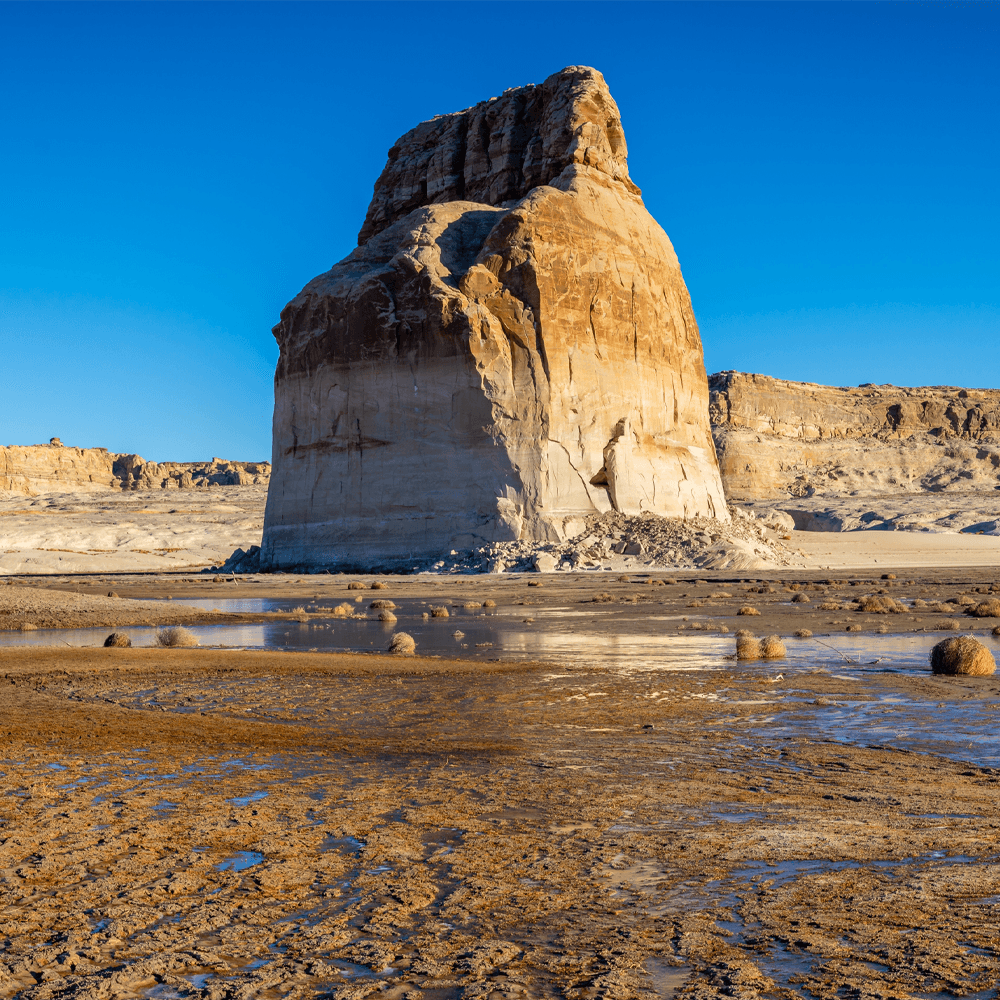AMWUA Blog
BY: AMWUA StaffColorado River shortage intensifying with Lake Powell under stress

Lake Mead has been our primary focus when discussing the Colorado River since that is the reservoir from which Arizona, California, and Nevada get their Colorado River supply. Yet, as of late, our focus has shifted to Lake Powell, which is upriver from Lake Mead and is showing stress from the unprecedented conditions in the Colorado River Basin due to a historic drought and climate change. With that increased attention, many wonder why Powell matters to us here in Arizona.
Water professionals look at Lake Powell as an indicator of the Colorado River’s overall health. Lake Powell is critical because each year, it releases water to Lake Mead for use by Lower Basin States – California, Nevada, Arizona – and Mexico. It also generates hydroelectric power used all across the western United States.
 In southeast Utah, Lake Powell sits behind Glen Canyon Dam, which is on the Arizona/Utah border. Lake Powell is the endpoint for the natural runoff from streams and rivers in the upper Colorado River watershed. Each year, snowpack accumulates in Colorado and Utah during the winter and flows towards Lake Powell after melting in the spring.
In southeast Utah, Lake Powell sits behind Glen Canyon Dam, which is on the Arizona/Utah border. Lake Powell is the endpoint for the natural runoff from streams and rivers in the upper Colorado River watershed. Each year, snowpack accumulates in Colorado and Utah during the winter and flows towards Lake Powell after melting in the spring.
Unfortunately, Lake Powell’s water storage levels have fallen to historic lows that haven’t been seen since the reservoir started to fill in the 1960s. The reasons for these alarming reservoir elevations are:
- More Colorado River water is being used than nature can replenish
- Climate change is drastically reducing the amount of spring runoff that would replenish Lake Powell
- Two very poor back-to-back winters have added to the negative hydrology of the river
When Lake Powell’s water levels start to fall, it has huge regional impacts. Firstly, it reduces the amount of water released to Lake Mead. This results in Lake Mead’s elevation declines since water from Lake Powell is the largest source of inflows to Mead. When Mead declines, Arizona, California, and Nevada have to follow shortage cutbacks. Also, the falling water levels in Powell impact power generation, which is critical for the western power grid and a revenue source for important programs throughout the Basin.
 This means we must be realistic and acknowledge the fact that the outlook for Powell remains bleak. Despite seeing almost average winter snowpack levels this year, runoff projections may be closer to 50% of normal. What that means is more is coming out of Powell than being replenished by nature. This is due to the warming temperatures, drier soils, and reduced precipitation caused by climate change. Mother Nature is dealing most of the cards right now. And for us, this all means what is happening at Lake Powell will trigger declines in Lake Mead, leaving us with less Colorado River water for the foreseeable future.
This means we must be realistic and acknowledge the fact that the outlook for Powell remains bleak. Despite seeing almost average winter snowpack levels this year, runoff projections may be closer to 50% of normal. What that means is more is coming out of Powell than being replenished by nature. This is due to the warming temperatures, drier soils, and reduced precipitation caused by climate change. Mother Nature is dealing most of the cards right now. And for us, this all means what is happening at Lake Powell will trigger declines in Lake Mead, leaving us with less Colorado River water for the foreseeable future.
The AMWUA cities recognize that conditions at Lake Powell and Lake Mead will worsen, which will impact one of their water supplies, Colorado River water. While the situation in the Colorado River is accelerating more quickly than anticipated, the ten AMWUA cities continue to plan and prepare for less Colorado River water. All of which is a reminder that we need to be extra smart and wise as desert dwellers with how we use our water.
To print or save this week's blog, a PDF version is available HERE .
For over 50 years, the Arizona Municipal Water Users Association has worked to protect our member cities’ ability to provide assured, safe, and sustainable water supplies to their communities. For more information, visit www.amwua.org .
